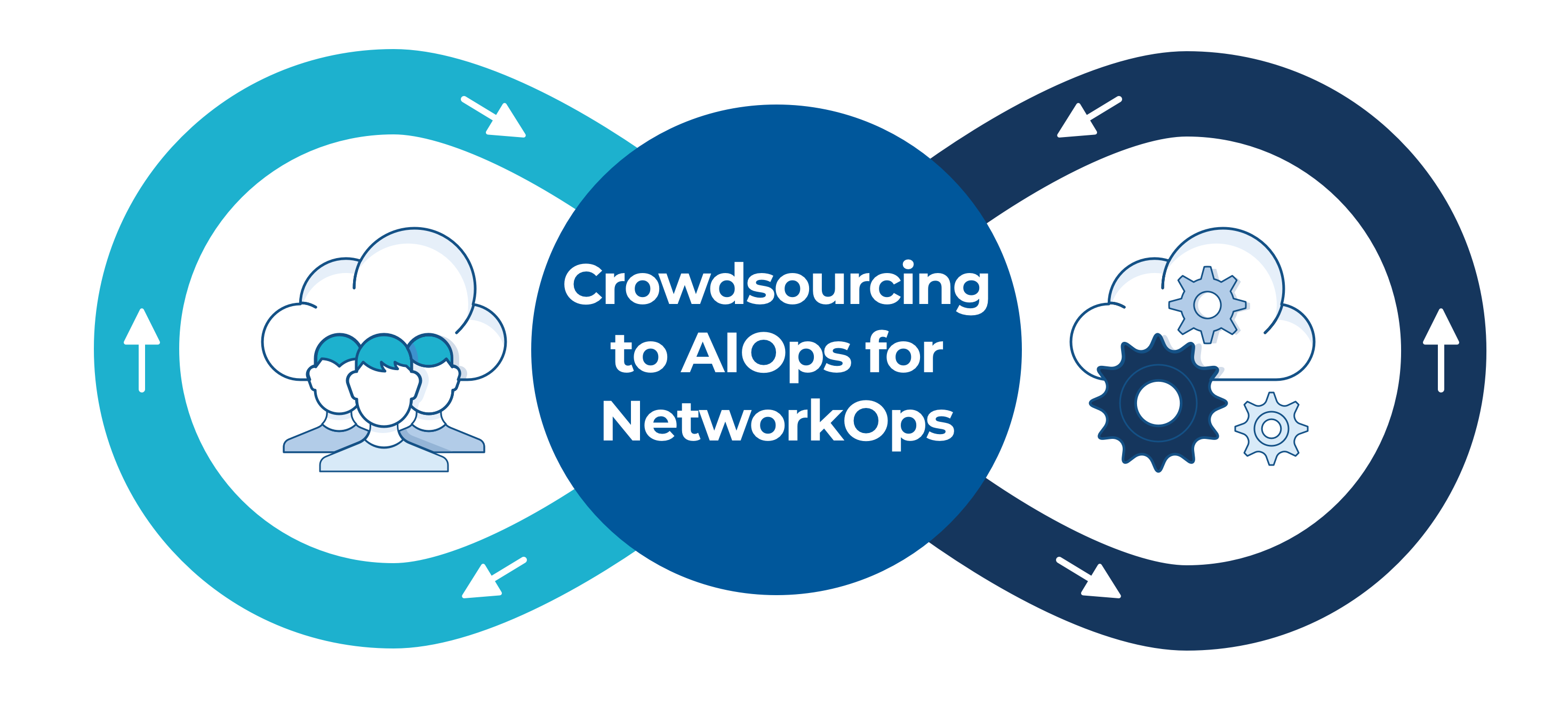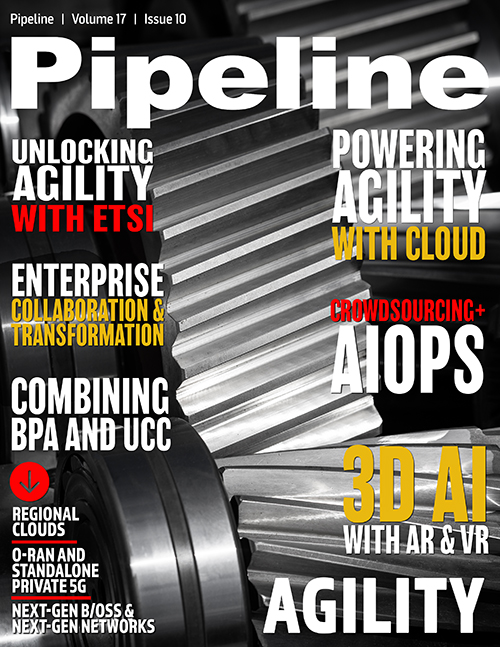Intelligent Automation
through Crowdsourcing + AIOps
As in nearly every case when it comes to autonomous networking within the enterprise, AIOps is dependent on data as the fundamental requirement to success: the more meaningful and accurate the data you have access to, the better your analytics-driven automation becomes. In this case, network operators are leveraging access to diverse and meaningful data (through crowdsourcing) as the input to their AIOps frameworks. The result is an industry-differentiated approach to improve the customer experience.
Picking out the proverbial needle in the haystack to decide whether a data-driven decision is neutral or potentially damaging to uninterrupted operations remains an omnipresent challenge. Using the crowdsourcing + AIOps model, network operators are gifted with the ability to observe and correlate the data to what really matters: decisioning that is considered immediately ‘actionable’ and automates answers and remediation or fixes back to the network operator. See Figure 2.

Figure 2: The Crowdsourcing + AIOps Model
The new NetworkOps workflow
Within network operator environments today, most network operating center (NOC) technicians are still ‘eyes on glass’ watching alarms, logs, and other consoles, waiting for something to malfunction. In this way, operators are relying on an otherwise proven methodology their predecessors used: base-level alarming and active polling that takes an ‘are you there?’ based approach to network and service assurance visibility. Additionally, the life of the NOC tech has been further complicated, as they are expected to manage brownfield networks with legacy infrastructure and greenfield networks with the latest next-generation technologies. The result is that NOCs (and their operators, of course) respond reactively, waiting and watching for something to break (hopefully before the customer sees the issue first), by directly accessing network elements or disparate network or element management systems—and hoping they can restore service in a timely fashion.
Imagine an alternative narrative to constant ‘eyes on glass’ and a reactive approach to network health―intelligent automation through crowdsourcing + AIOps―where all critical data is collected and analyzed for real-time or trending (predicted) action. (See Figure 3 on next page)
This ‘actionability’ needs to be defined upfront by the operator according to their network and customer SLAs. This is required for both real-time failures and proactive or predictive responses. It is accomplished with advanced analytics that can be operator or even end-customer defined. These analytics need to be baselined against the original service intent (golden configuration), against performance, and done so at original development of the service or a change thereafter.
The objective is to get eyeballs off the screen and move away from watching alarm lists, system log data and multiple disparate NMS. In essence, it is getting humans away from looking at events; if you know what you’re looking for, you can automate it.



















